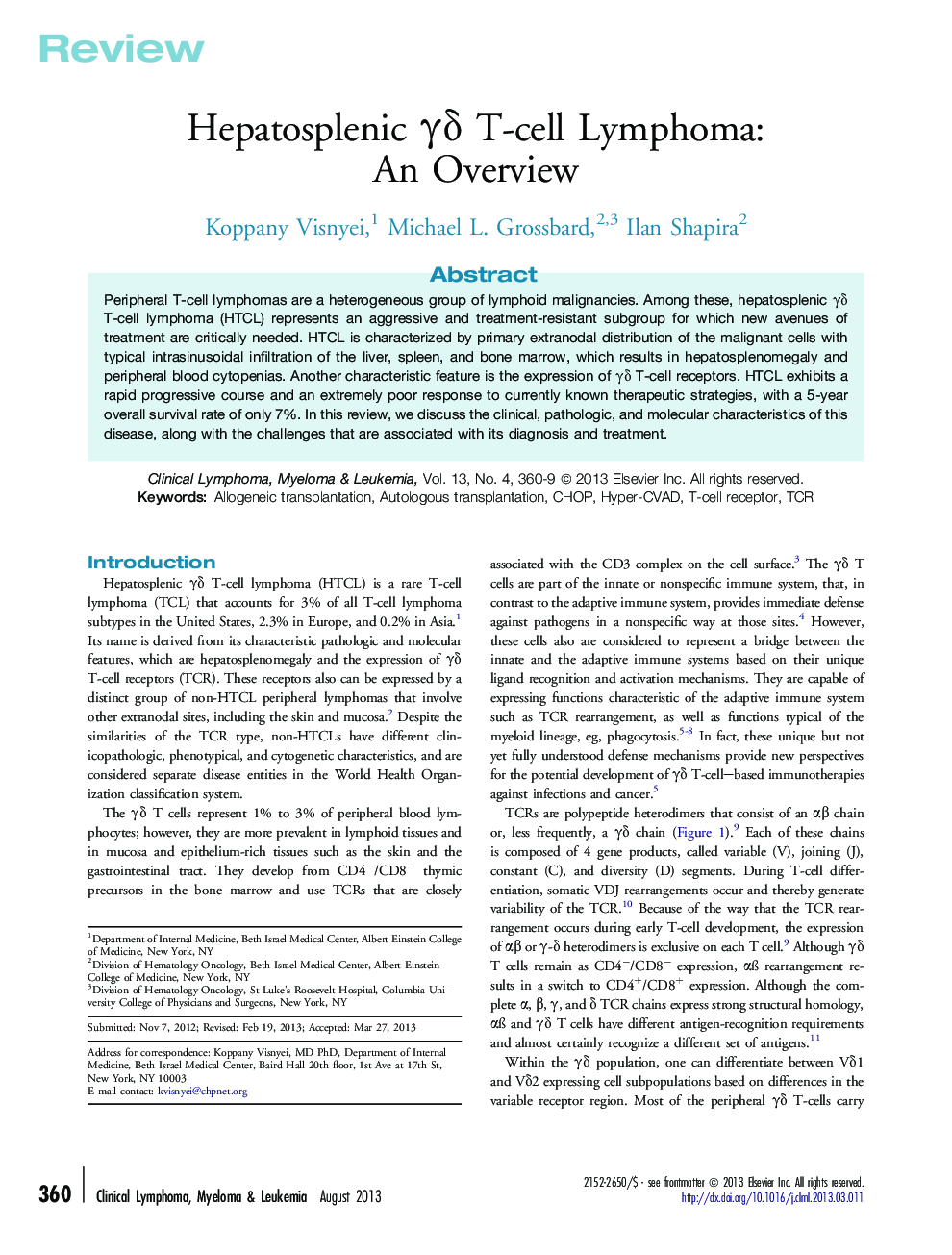| Article ID | Journal | Published Year | Pages | File Type |
|---|---|---|---|---|
| 2754980 | Clinical Lymphoma Myeloma and Leukemia | 2013 | 10 Pages |
Peripheral T-cell lymphomas are a heterogeneous group of lymphoid malignancies. Among these, hepatosplenic γδ T-cell lymphoma (HTCL) represents an aggressive and treatment-resistant subgroup for which new avenues of treatment are critically needed. HTCL is characterized by primary extranodal distribution of the malignant cells with typical intrasinusoidal infiltration of the liver, spleen, and bone marrow, which results in hepatosplenomegaly and peripheral blood cytopenias. Another characteristic feature is the expression of γδ T-cell receptors. HTCL exhibits a rapid progressive course and an extremely poor response to currently known therapeutic strategies, with a 5-year overall survival rate of only 7%. In this review, we discuss the clinical, pathologic, and molecular characteristics of this disease, along with the challenges that are associated with its diagnosis and treatment.
